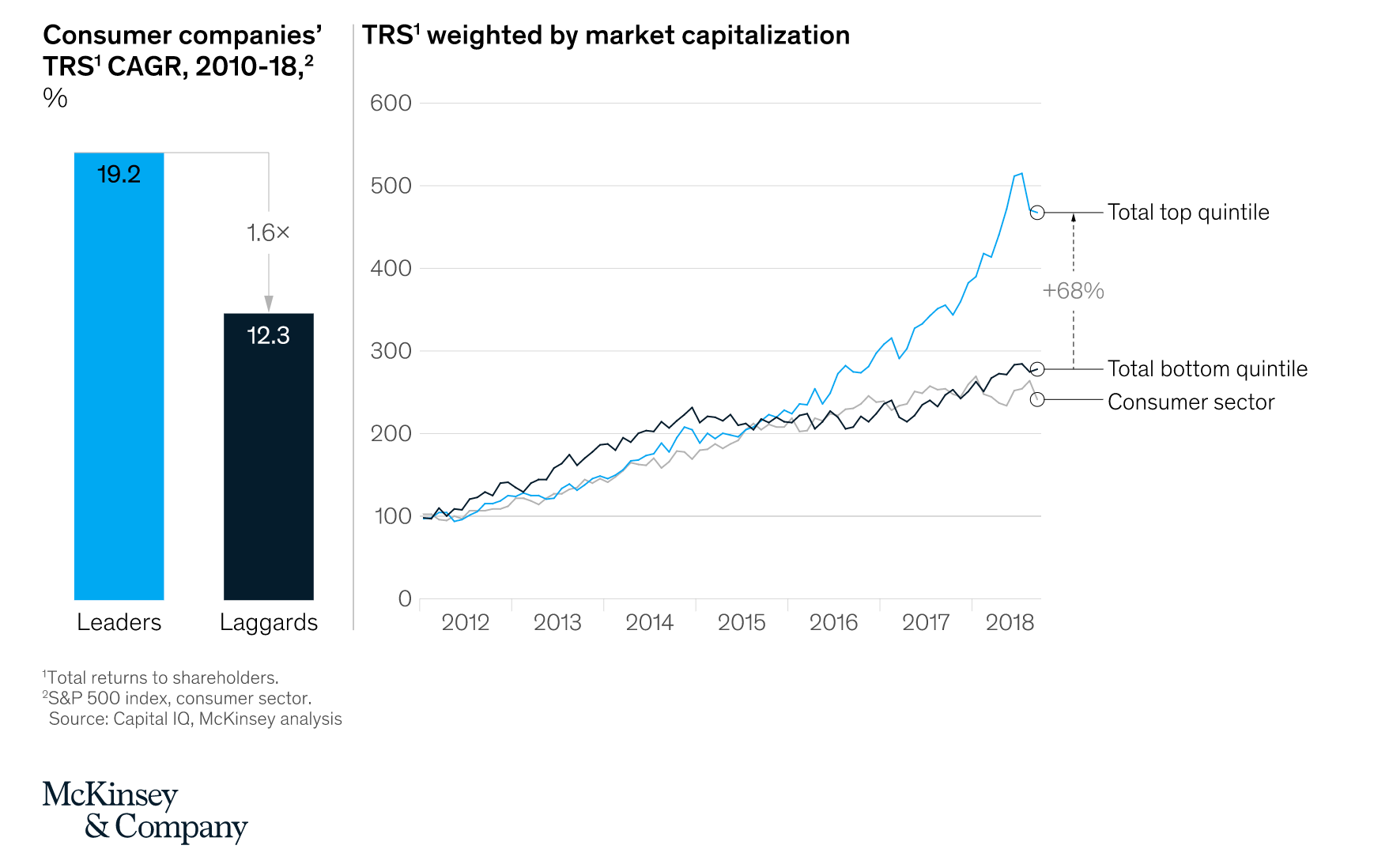Which E-Commerce Operations Must Managers Improve?

An e-commerce manager must focus on improving e-commerce operations that make a direct positive impact on gross margins. By prioritizing profit-generating e-commerce operations, managers can intelligently deploy key resources towards delivering maximum value to the business.
A recent study showed that retail e-commerce sales across the globe reached $4.28 trillion in 2020 alone. While this number is projected to grow to $5.4 trillion by 2022, it still represents less than 50% of retail sales. In the US alone, e-commerce has accounted for over 40% of retail sales growth, and experts estimate that 95% of all purchases will be made online by 2040.
For e-commerce managers, now is the time to future-proof their brands and stake their place in the market with the right technology. In this post, we will provide direction on how to improve e-commerce operations that drive growth.
[toc-embed headline=”Key E-Commerce Operations to Improve”]
Key E-Commerce Operations to Improve
When considering key e-commerce operations most likely to improve profitability, an e-commerce manager must align people, processes, and e-commerce technology. Furthermore, this alignment must be consistent across the entire value chain to create value for customers while accessing new efficiencies. This is especially important as it has been proven that digitally and analytically mature companies outperform competitors lacking in digital and analytical maturity.

Let’s discuss the two key operations that can help an e-commerce manager achieve digital and analytical maturity.
Customer insight and data acquisition
In e-commerce, profitability is often linked to the capability of available technology in achieving new efficiencies. An e-commerce manager can quickly spot trends that help forecast and plan key e-commerce operations with the right data analysis technology.
For example, robust data acquisition and analytic tools, like an order management system (OMS), combine post-purchase data acquisition with order management to provide powerful data insights, such as gross merchandise value (GMV). This helps managers make data-backed decisions that optimize e-commerce operations, including anticipating sales trends and identifying profitable products to maximize revenue.
The right tool should extract and interpret data from a range of sources, including customer demographics, buying history, and social media activity. By using the data to offer insight into shopping cart behavior, product performance, and customer lifetime value, an e-commerce manager can run profitable sales campaigns by understanding what customers want and how to give it to them.
For example, Netflix uses users’ viewing history to create algorithms that make TV and movie recommendations based on A/B tests. In the same way, some e-commerce tools use data from shopping behavior to make recommendations on promotions and coupons based on intelligent data analysis.
This process is made possible by machine learning (ML) algorithms that deliver smarter coupon and promotional offer recommendations. They identify patterns in data collected from previous orders and use this to make relevant recommendations.
However, this more advanced route is likely a step too far ahead for many e-commerce operations managers. It helps to start with a foundational pricing and promotions tool like fabric PIM then complement it with the tools above.
Inventory management
Customers consider fulfillment times and delivery lead times key factors in completing the checkout process. Assessment of abandoned cart rates demonstrates this. Research shows that 63% of customers abandoned their carts as a result of high shipping costs. Furthermore, long shipping times are responsible for 36% of abandoned shopping carts.
Optimizing end-to-end inventory management is crucial for e-commerce businesses of all sizes. An e-commerce operations manager needs to keep on top of supply to ensure that customers get what they want when they want it.
Antiquated stock management systems such as Microsoft Excel sheets are no longer suitable. They are bulky, time-consuming, difficult to update in real-time, and not secure. To compete in the fast-evolving e-commerce landscape, managers need secure, intelligent inventory management systems that help them:
- Seamlessly integrate with multiple sales channels
- Keep track of inventory across distributed warehouses
- Manage and sync inventory across locations in real-time
- Manage orders using high-level filters to categorize into groups
- Forecast future sales based on past demand
In addition to this, technology solutions such as robotic processing automation (RPA) can also help an e-commerce operations manager save time and increase efficiency by automating repetitive, time-consuming tasks. For example, RPA can handle returns by automatically confirming receipt of returned items, updating inventory, making payment adjustments, and updating financial records.
An OMS software helps you optimize inventory management and order fulfillment using semi-automated workflows. With a central interface for viewing and managing orders, the software intelligently syncs inventory across platforms and pushes orders through your ecosystem in real-time.
[toc-embed headline=”Key Takeaways”]
Key Takeaways
- Data acquisition and analytic tools help an e-commerce manager put their best foot forward in the evolving e-commerce space by making reliable predictions and personalizing the customer experience.
- You can use fabric PIM to complement machine learning algorithms to provide personalized and highly relevant recommendations to users.
- Managers must improve their ability to manage inventory efficiently.
- You can use fabric OMS to streamline your inventory seamlessly and synchronize order fulfillment across platforms simultaneously.

Business development @ fabric. Previously merchandising and strategy @ Hanna Anderson, Ann Taylor, Eddie Bauer.